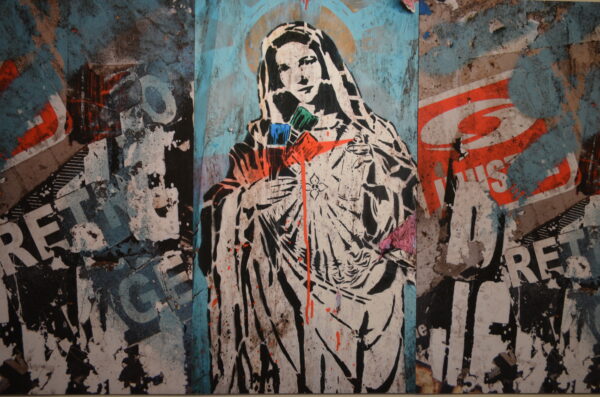
 René West’s exhibition titled “City Walls” opened Friday at the Process Art House at 700 S. Van Buren St. The show will run through May 7.
René West’s exhibition titled “City Walls” opened Friday at the Process Art House at 700 S. Van Buren St. The show will run through May 7.
West said she took photographs displaying graffiti walls throughout the country and has been from New York City all the way to Los Angeles, traveling mostly by car.
She said she has been working on the project on and off since 2007 and began working steadily in 2010.
According to her artist statement, West has made more than “2,500 photographs in 13 states and 17 cities” and photographed by using “macro lens that focuses as close as two inches from the subject,” which allows the images to “represent small fragments of the world greatly magnified when printed.”
“The complication lies in walking endlessly on city streets looking for it,” she said. “I find an area that opens up, and I shoot a lot of images. And then I walk for a long time again, searching.
“I just like the search – some weird Quixote quest.”
West said she likes textures and that layers of them show up in her work all the time.
“It is very important to me the way I craft an image and that it does have that sort of tactile quality about it like it has on the street when I find it,” she said.
“I work to craft my prints to make it that way, and I’m glad that they are received that way.”
Stephanie Perez, a graphic design major specializing in print, said she likes that the photographs are so full of energy. She said they motivated her to do more hands-on work because her work is mostly on the computer.
 “I like their texture,” Perez said about the photographs “Cats” and “Fees.” “I know it’s flat, but it has so much texture, I want to feel it,” she said as she kept crinkling her hands.
“I like their texture,” Perez said about the photographs “Cats” and “Fees.” “I know it’s flat, but it has so much texture, I want to feel it,” she said as she kept crinkling her hands.
Carlos Najera, an animation and graphic design major, said West was his photography teacher. He said he likes the professionalism and how much detail West has put in her photographs.
“If you step far away from them, they look like they are actually part of a wall,” Najera said.
One of the photographs he likes, Najera said, is the “White Fox” because of the contrast between the character and the background texture, “which is something she taught us,” he said.
“Anyone can take a picture of anything, but it’s another thing taking a picture of something and placing it correctly in the picture.”
To see more of West’s work, go to www.renewest.net.
For information on the Process Art House, go to www.processarthouse.com.

Leave a Reply